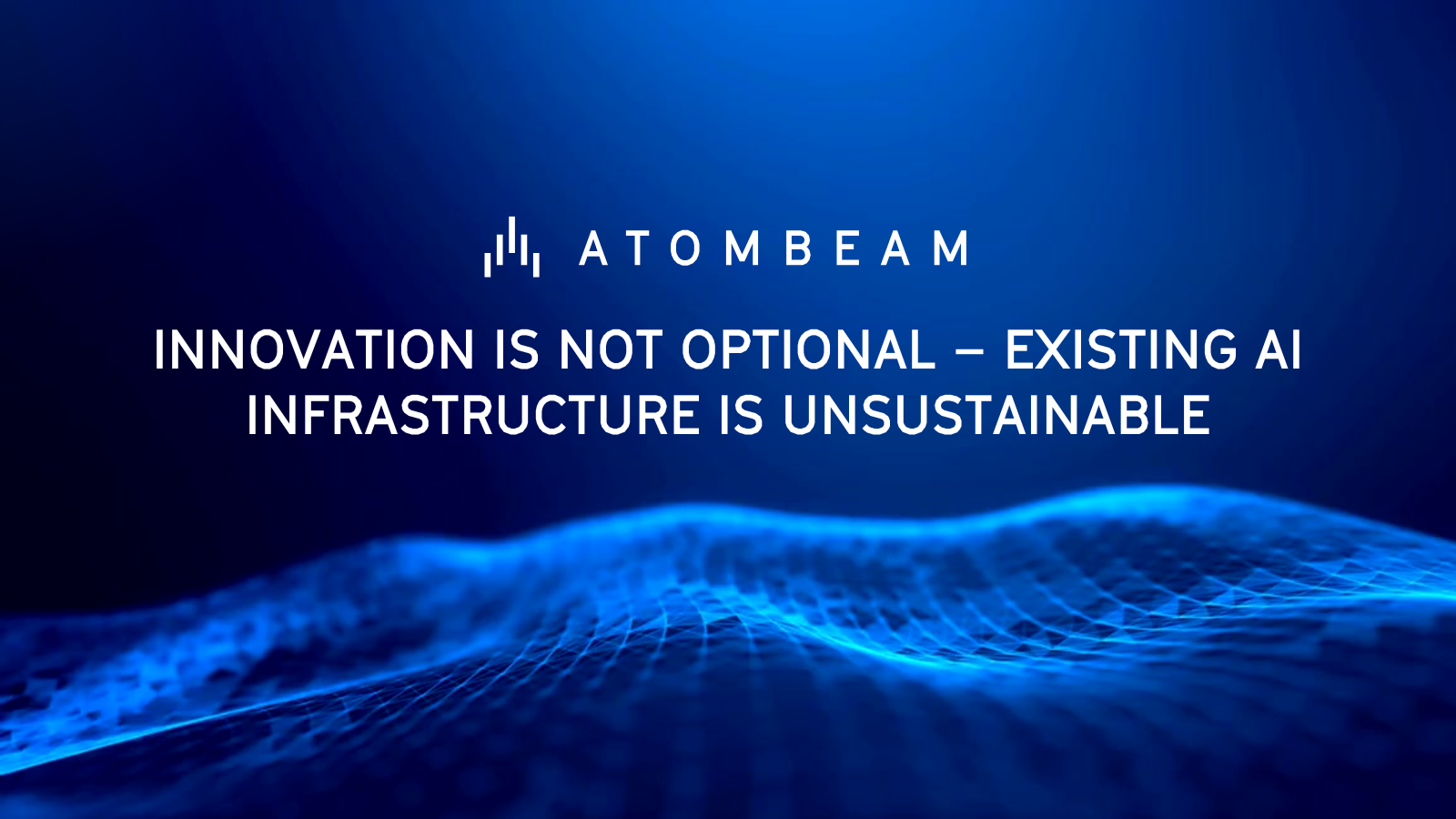Recently Deloitte hosted a thought-provoking webinar titled “Can US infrastructure keep up with the AI economy,” and a corresponding article. Deloitte’s analysis, which included surveying data center executives and power company executives, uncovered a number of insightful takeaways.
One of the most interesting was that both groups rank technological innovation and regulatory changes as the top two strategies for overcoming the infrastructure gaps associated with the widespread adoption and growth of AI, with data center executives ranking technological innovation as the top strategy and regulatory changes second. In contrast, power company executives ranked regulatory changes as the top strategy and innovation as the second top strategy. And both groups pointed to more funding as the next most important strategy going forward.
At Atombeam, we share the belief that technological innovation is absolutely required to address the infrastructure gaps associated with AI’s growth. But we do not believe, in a time when Moore’s Law arguably no longer applies, that this is a challenge we can't simply spend our way out of.
We believe the current trajectory of AI infrastructure is fundamentally unsustainable and that collectively, we cannot build enough data centers fast enough, or power or cool them sufficiently to keep up with the compute and storage needs associated with AI today. The industry must shift towards intelligent architectures – architectures that enable enterprises to move, use, store and secure data in fundamentally new ways.
Our flagship product, Neurpac, uses our Data-as-Codewords technology to do just that by compressing data by 75%, increasing available bandwidth by 4x or more, and providing inherent encryption – all with the near zero latency today’s AI use cases increasingly demand. In these ways Neurpac significantly reduces the infrastructure resources AI and IoT workloads require.
But we also believe a new approach to AI itself is required, one that unlike the status quo does not require systems to recompute everything from scratch for each interaction. That is why our Persistent Cognitive Machine (PCM) represents a paradigm shift. Unlike traditional AI systems and Large Language Models that forget everything between sessions or "agentic" systems that merely chain prompts together, PCM is a cognitive operating system that thinks continuously, remembers permanently, and learns dynamically – all while maintaining an evolving internal model built on rigorous mathematical foundations that enable it to serve as a true cognitive teammate that improves over time.
Importantly, PCM also caches successful patterns. And it processes insights and queries locally rather than going repeatedly to the cloud, a distinction that reduces computational waste by 70-80% while delivering superior results.
Large Language Models are immensely powerful and useful – as are AI agents. But they cannot be treated as the sustainable underpinning of the AI infrastructure of the future. PCM offers an alternative, one that uses both LLM and agentic assets when needed while delivering far superior results that reflect the potential of human-like intelligence.
Thank you









